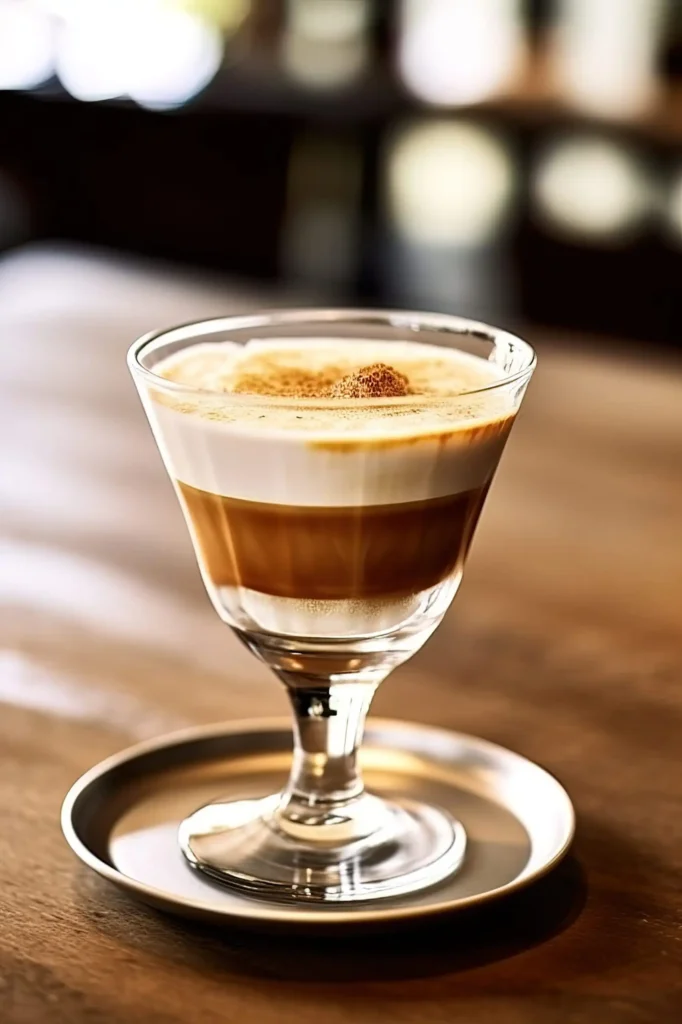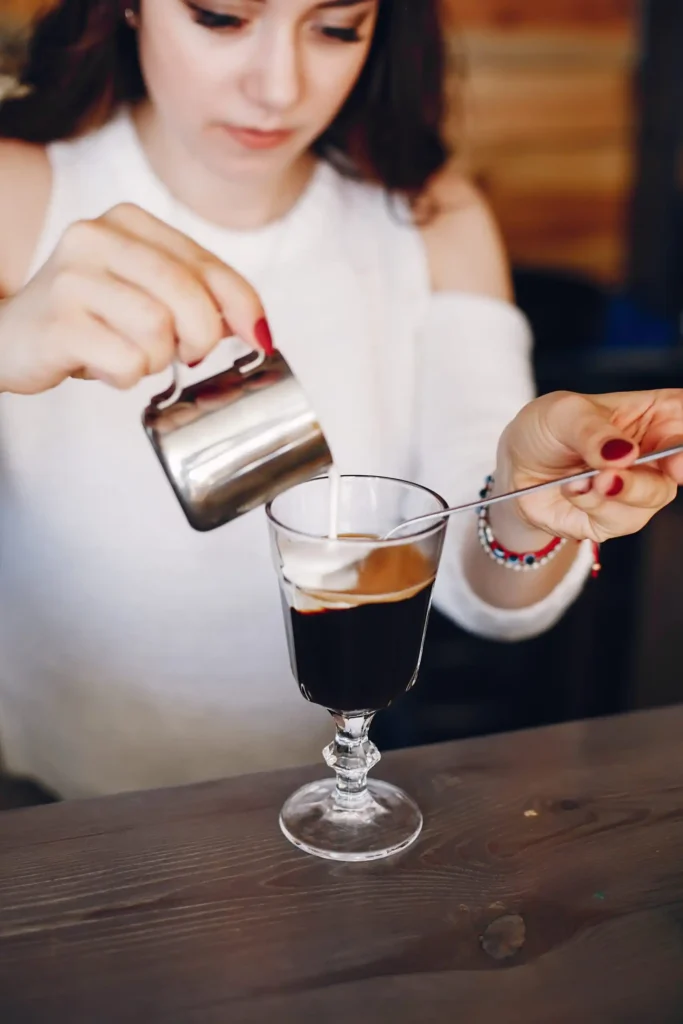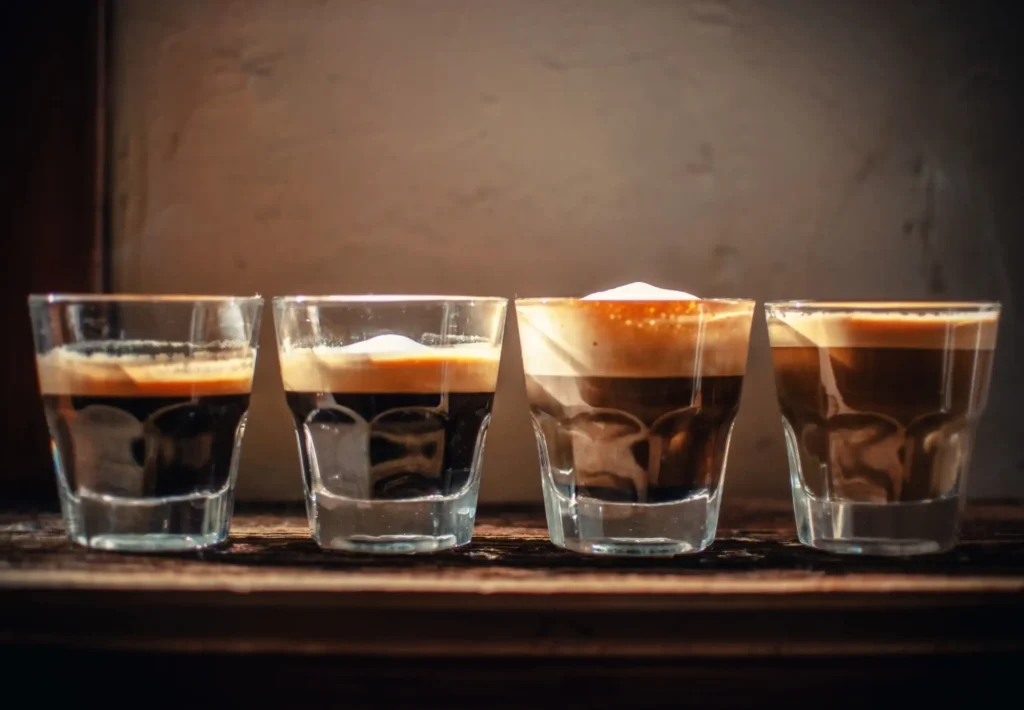Carajillo recipe: Coffee Cocktail ingredients
Uncover the history, variations, and secrets of Carajillo recipe a creamy, boozy espresso drink that’s captivated Spain and beyond.
Table of Contents
1. What is Carajillo recipe?
The Carajillo (pronounced kah-rah-HEE-yoh) is a beloved Spanish coffee cocktail blending bold espresso with Licor 43, a sweet, vanilla-citrus liqueur. This drink is a staple in Spanish cafes, often enjoyed as a post-meal digestif or midday energy boost.

Key Characteristics
- Flavor Profile: Bitter espresso balanced by creamy sweetness, with citrus and spice undertones.
- Texture: Smooth and velvety, often layered for visual appeal.
- Strength: Typically 1:1 ratio of coffee to liqueur (adjustable to taste).
Why It Stands Out
Unlike other coffee cocktails (e.g., Irish Coffee), Carajillo relies on Licor 43’s unique 43-ingredient recipe, which includes vanilla, citrus peels, and aromatic spices. This creates a complex flavor that’s both refreshing and indulgent.
2. The History of Carajillo recipe: From Colonial Cuba to Modern Spain
Origins in Cuba
The Carajillo’s roots trace back to 19th-century Cuba, then a Spanish colony. Legend says Spanish soldiers mixed aguardiente (a crude rum) with coffee to “dar coraje” (boost courage) before battles. The term “Carajillo” may derive from “coraje” or the Catalan “caraj,” meaning “damn” – a nod to its strong kick.
Evolution in Spain
Post-colonialism, the drink migrated to Spain, where rum was replaced with local spirits like brandy or Licor 43. By the 20th century, it became a coffee culture icon, especially in Catalonia and Valencia. Today, it’s a symbol of Spanish hospitality, often served with desserts like churros con chocolate.
Global Popularity
Recent TikTok trends and the craft cocktail revival have propelled Carajillo recipe into international fame, with mixologists adding modern twists like cold brew foam or smoked garnishes.
3. Ingredients Explained

A. Espresso
- Why It Matters: Espresso’s concentrated flavor balances Licor 43’s sweetness.
- Brewing Methods:
- Moka Pot: Affordable and authentic (used in Spanish homes).
- Espresso Machine: For a true barista-quality shot.
- Instant Coffee: A quick fix (use 2 tsp in 1 oz hot water).
B. Licor 43
- What’s in It?: 43 ingredients, including vanilla, citrus, cinnamon, and tropical fruits.
- Why It’s Unique: Its golden color and creamy texture come from a blend of citrus juices and spices.
- Substitutes:
- Rum (Carajillo de Ron)
- Brandy (Spanish-style)
- Coffee Liqueur (e.g., Kahlúa)
C. Optional Add-Ons
- Garnishes: Lemon peel, cinnamon stick, cocoa powder.
- Sweeteners: A dash of simple syrup for extra sweetness.
- Cream: Whipped cream for an iced version.
4. Step-by-Step Carajillo Recipe
(Serves 1 | Total Time: 5 minutes)

Ingredients
- 1 oz (30ml) freshly brewed espresso
- 1 oz (30ml) Licor 43
- Ice cubes (for iced version)
- Lemon peel or cinnamon stick (garnish)
Instructions
- Brew the Espresso
Use a Moka pot or espresso machine. Let it cool slightly to preserve Licor 43’s delicate flavors. - Layer or Mix
- Traditional Style: Pour Licor 43 into a heatproof glass, then slowly add espresso over the back of a spoon to create layers.
- Stirred: Combine both ingredients and stir gently.
- Garnish & Serve
Add a lemon peel twist or cinnamon stick. For an iced version, pour over ice and top with whipped cream.
Pro Tips
- Temperature: Serve hot for a cozy digestif or cold for summer.
- Glassware: Use a clear rocks glass to showcase the layers.
- Experiment: Add a splash of orange liqueur (Cointreau) for extra citrus.
5. Regional Variations of Carajillo
A. Recipe de Ron (Cuban Style)
- Ingredients: 1 oz espresso + 1 oz dark rum.
- History: Closest to the original colonial recipe, often served with a sugar cane stirrer.
B. Recipe de Brandy (Spanish Classic)
- Ingredients: 1 oz espresso + 1 oz Spanish brandy (e.g., Torres).
- Popular in: Madrid and Andalusia.
C. Iced recipe
- Ingredients: 1 oz cold brew + 1 oz Licor 43 + ice + whipped cream.
- Trending in: Beach bars in Valencia and Ibiza.
D. Non-Alcoholic
- Ingredients: 1 oz espresso + 1 oz vanilla-citrus syrup (mocktail version).
6. Cultural Significance in Spain
When to Drink Carajillo recipe
- Post-Meal: As a digestif after lunch or dinner.
- Mid-Morning: Paired with pan con tomate (tomato bread) in Catalan cafes.
Festive Occasions
- Christmas: Served with turrón (almond nougat).
- Fiestas: A staple at Spanish weddings and street festivals.
7. Pairing Suggestions
- Food: Churros, dark chocolate, almond cookies, or Manchego cheese.
- Occasions: Brunch, dinner parties, or solo indulgence.
8. The Science of Flavor
Licor 43’s vanilla and citrus notes complement espresso’s bitterness through flavor bridging. The liqueur’s sweetness reduces perceived acidity, while citrus brightens the coffee’s earthy tones a balance rooted in food chemistry.
9. Nutritional Insights
- Calories: 150 per serving (without cream).
- Sugar: 10g (from Licor 43’s natural sweetness).
- Caffeine: 63mg (less than a standard espresso).
10. How to Serve a Carajillo Like a Pro
Serving a Carajillo isn’t complicated, but doing it right makes the whole experience way better. Whether you’re making one for yourself or showing off your cocktail game, here’s how to serve it up just right:
- Pick the Right Glass
A small rocks glass (you know, the short sturdy kind) is perfect. It keeps things simple and lets the drink do the talking. - Hot or Cold? Your Call.
Carajillo can go either way—hot or on the rocks.- On ice is super refreshing, especially when it’s warm out.
- Served warm? That’s cozy vibes all the way. Great after dinner or on a chilly evening.
- Wanna Get Fancy? Layer It.
If you’re feeling a little extra, try layering the drink. Pour the Licor 43 in first, also sluggishly add the espresso over the reverse of a ladle. It creates a cool layered look. Totally optional, but very Instagram-worthy. - Optional Garnish Game
A little garnish goes a long way.- Try an orange peel for a citrusy twist.
- Or drop in a cinnamon stick if you’re going for something a bit spicier.
- A couple of coffee beans on top? Always a classy touch.
- Mix It Before You Sip It
If you did the layered thing, give it a quick stir before drinking. That way, you get that smooth mix of coffee and liqueur in every sip.
Conclusion
The Carajillo is more than a drink it’s a celebration of Spanish heritage and culinary creativity. Whether you stick to tradition or experiment with modern twists, this guide equips you to master Spain’s iconic coffee cocktail.
FAQ
Can I make Carajillo without Licor 43?
Yes! Use equal parts rum, brandy, or coffee liqueur.
How strong is Carajillo?
Around 20% ABV (similar to fortified wine).
Is Licor 43 gluten-free?
Yes, it’s made from gluten-free ingredients.
Can I batch-make Carajillo for parties?
Absolutely! Mix 1 cup espresso + 1 cup Licor 43, then refrigerate. Serve over ice.
What Is Carajillo Made Of?

A Carajillo is a simple yet bold coffee cocktail made with just two main ingredients:
Espresso – Strong, rich coffee that gives the drink its deep flavor.
Licor 43 – A sweet Spanish liqueur with hints of vanilla, citrus, and spices.
That’s it! Just coffee and liqueur—but the combo packs a punch. Some versions swap in other liquors like brandy or rum, but the most popular (and arguably the best) is the one with Licor 43.
Is carajillo Mexican or Spanish?
Technically, Carajillo has Spanish roots, but it’s got a strong Mexican twist.
The original version came from Spain, where it started as a mix of coffee and liquor—often brandy—to give people a little “courage” (or coraje, which is where the name Carajillo comes from).
But when it made its way to Mexico, it evolved into something even more delicious. Mexicans popularized the version with Licor 43, giving it that smooth, sweet, and slightly spiced flavor that’s now super well-loved—especially as a post-dinner drink.
So, short answer: it’s Spanish in origin, but Mexico made it iconic.


One Comment